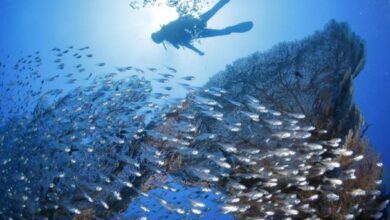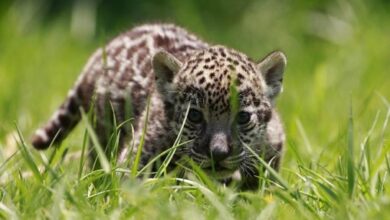The Rewilding Movement


The Rewilding movement aims to restore land to the way it was before humans dominated the planet. With several organization across the world, the movement is restoring areas of land to an uncultivated state and reintroducing keystone species and predators.
The term was coined by conservationist and activist Dave Foreman in 1990 and later redefined by conservation biologists Michael Soulé and Reed Noss. Foreman created the Wildlands Network and the Rewilding Institute. In recent years it became popular thanks to George Monbiot’s TED Talk, “For more wonder, rewild the world.”
To Monbiot, rewilding “means bringing back some of the missing plants and animals. It means taking down the fences, it means blocking the drainage ditches, it means preventing commercial fishing in some large areas of sea, but otherwise stepping back. It has no view as to what a right ecosystem or a right assemblage of species looks like. It doesn’t try to produce a heath or a meadow or a rain forest or a kelp garden or a coral reef. It lets nature decide, and nature, by and large, is pretty good at deciding.”
But which are the rewilding projects currently going on?
For rewilding Australia it’s all about the Tasmanian Devil and the Quoll.
They’ve been captive breeding Tasmanian Devils and developed island introductions to help the population growth. These animals suffered wild populations decrease because of the Tasmanian Devil facial tumor disease, but according to Rewilding Australia founder, Rob Brewster, “the future is looking brighter for the species.”
As for the Quoll, this is the flagship project of the organization. They’ve been reintroducing eastern quolls to the mainland with the assistance of local government, and funding partners. Feral cats and foxes remain their main predators but the species has been successfully reintroduced, assured Brewster.
In Europe, the de-extinction process for giant wild cattle is underway. Known as aurochs, these 6 feet tall mammals disappeared in 1627. They were the ancestors of today’s domestic cattle. Along with the Taurus Foundation, Rewilding Europe has established 5 breeding sites for the Taurus program which is primarily crossbreeding Iberian and Podolian breeds to achieve mammals with auroch-like properties.
The resulting cattle, called Tauros are now located in Portugal, Spain, Croatia, Romania and the Netherlands.
“In the near and more distant future, herds of Tauros will live as wild cattle and will contribute to the sustainable conservation of Europe’s open landscapes and biodiversity,” Ronald Goderie of the Taurus foundation and his colleagues wrote in a recent report.
Progress is also being made to bring back the woolly mammoth. The Harvard Woolly Mammoth Revival team led by George Church, is using genetic engineering to copy and paste DNA from the mammoth genome IGNORE INTO living elephant cell cultures. Mutations for mammoth blood, fat and hair development have already been engineered IGNORE INTO the elephant cells using a technology known as CRISPR.
“The ultimate goal of woolly mammoth revival is to produce new mammoths that are capable of repopulating the vast tracts of tundra and boreal forest in Eurasia and North America,” says the project. “The goal is not to make perfect copies of extinct woolly mammoths, but to focus on the mammoth adaptations needed for Asian elephants to live in the cold climate of the tundra.”
According to Church, “the work offers clues to large mammal conservation; ancient DNA holds secrets that affect modern biology and medicine; and mammoths are thought to have maintained grasslands, which could insulate permafrost and sequester climate change-associated atmospheric carbón,” he told Seeker.
Meanwhile, Kathy Hodder of the Bournemouth University and her team wrote while doing research on similar exploration proposals. “It would seem reasonable to assume that no one really believes that past landscapes can be restored exactly, but that invaluable lessons may be learned by looking back, and that we can strive towards, but never reach, a future natural state. The outcomes of such efforts are by definition uncertain and unpredictable, and none of us will live long enough to see the outcome of these attempts.”
As for Latin America, the major rewilding project going on is the Guanacaste Conservation Area in Costa Rica. The idea is restoring dry tropical forest and rainforest in the northwestern region of the country.
“While rewilding looks back in time to learn about those lost ecosystem connections we can restore, we have to work with the environmental constraints we now have in our environment– invasive species, people seeking resources, farms, cities, roads and a warming climate — and we need to help to manage ecosystems to maintain ecosystem function and connections that are so important for biodiversity to flourish,” Brewster concluded.
LatinAmerican Post | Maria Andrea Marquez




